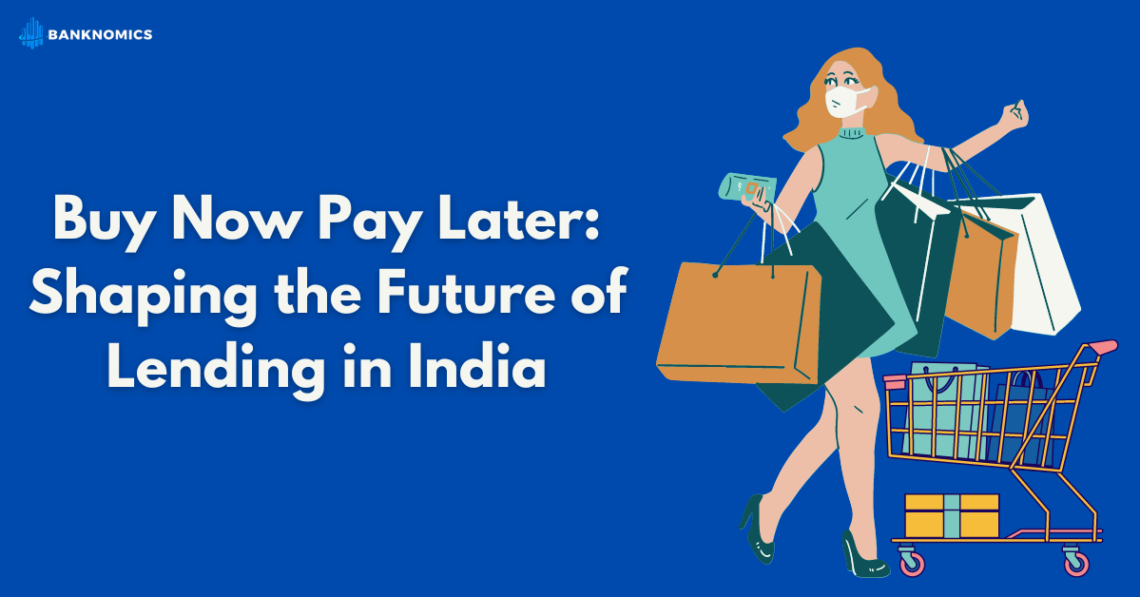In today’s fast-paced world, where convenience and flexibility are highly valued, a new trend has emerged in the financial services sector in India. “Buy Now Pay Later” (BNPL) services have gained significant traction, especially in the wake of the pandemic-induced changes to consumer behavior.
This blog explores the rising popularity of BNPL in India, its impact on the lending landscape, and its potential to reshape the future of credit in the country.
The Definitive Handbook: Purchase Today, Pay Later: Influencing the Evolution of Borrowing in India.
In this article, we delve into the surging trend of Buy Now Pay Later (BNPL) in India, analyzing its profound influence on the lending sector and its capacity to revolutionize the credit landscape in the nation.
The Growing Popularity of BNPL in India
According to “The Future of Financial Services” report, India leads the world in its intent to embrace Buy Now Pay Later services in the future. As the pandemic prompted consumers to shift their shopping habits online, BNPL emerged as more than just a payment mechanism. It provided a way to alleviate borrowers’ financial stress by offering no-cost equated monthly installments (EMIs). This symbiotic relationship between e-commerce and BNPL portends a promising future.
Goldman Sachs predicts that by 2024, the Indian e-commerce market will reach $99 billion, driven by soaring consumer demand. Concurrently, BNPL is expected to be the fastest-growing online payment method, surging from 3% in 2020 to 9% in 2024.
BNPL as a Mode of Payment: A Rising Trend
As e-commerce and digital payments flourish in India, an emerging lending tech sector has given rise to BNPL. The simplicity of access to credit has made it the go-to product for Gen Z consumers, young millennials, and first-time credit borrowers often overlooked by traditional banks.
A survey reveals that India’s BNPL market is projected to grow to $45-50 billion by 2026, up from $3-3.5 billion currently. Furthermore, the number of BNPL users is expected to increase to 80-100 million by then, compared to the present 10-15 million. This has led to numerous companies entering the BNPL market, with traditional banks also joining forces with new-age fintechs.
BNPL vs. Credit Cards: A Shifting Preference
Digital natives, including tech-savvy millennials and Gen Z, are increasingly gravitating toward micro-credit and purchase-now-pay-later services for a more seamless user and merchant experience. While credit cards have been prevalent for decades and have made their way into the online purchasing ecosystem, the time-consuming documentation, credit score requirements, and multiple identification rounds have become deterrents for the younger generation. BNPL has stepped in to eliminate these friction points, offering flexibility and transparency that align with the evolving expectations of consumers.
BNPL: A Catalyst for the Future of Lending
BNPL is not set to replace traditional credit, but it has the potential to enhance it through collaboration. In a credit-starved economy like India, BNPL loans are primarily utilized for online shopping or paying utility bills, making them a popular form of online transactions. This shift in perception transforms BNPL from a mere loan instrument to a lifestyle symbol, enabling individuals to purchase desired products at an affordable price.
Moreover, BNPL plays a crucial role in bringing the next billion individuals into the formal financial fold, as most BNPL borrowers are new to credit. By enabling them to build their credit ratings and enter the formal financial market, BNPL contributes to improving financial inclusion in the country. Additionally, traditional financial institutions can leverage this credit history data to develop more comprehensive and efficient credit risk assessment models, making credit access easier for those who have been previously denied.
Conclusion:
Buy Now Pay Later has transcended its status as a credit instrument to become a way of life. In India, it is poised to become the driving force behind credit expansion, gradually transforming the credit landscape in the country. As smartphone usage and internet connectivity continue to proliferate across India, the reach of BNPL payment providers is expected to expand further.
According to a report by Redseer Consulting, the BNPL segment is experiencing a remarkable 65% year-on-year growth and is projected to reach $40 billion by 2025. With such growth and potential, Buy Now Pay Later is redefining lending and shaping the future of financial services in India.
Read more!
Keep reading and supporting Banknomics!





